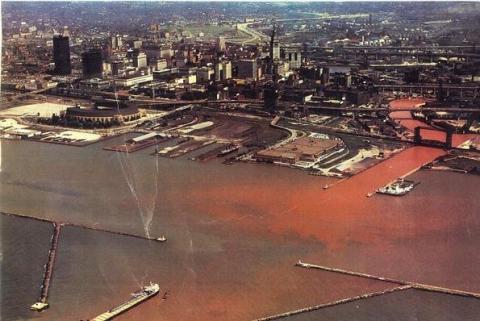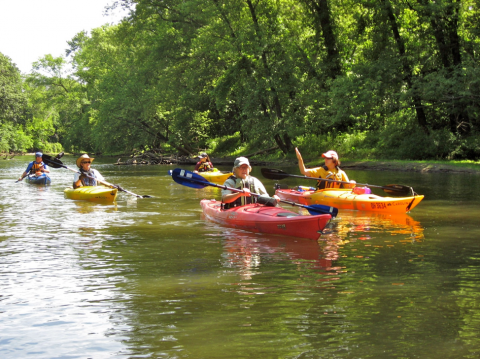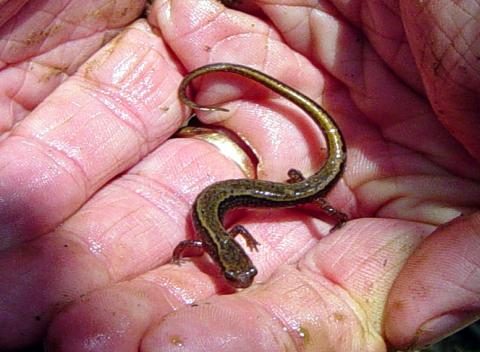This June will be the 50th anniversary of the 1969 burning of the Cuyahoga River in Cleveland, Ohio. It was a transformative event in American history that is associated with the birth of the Environmental Protection Agency (EPA) and the Clean Water Act. The ecological movement was just gaining ground with the first Earth Day in April 1970. President Richard Nixon proposed the establishment of EPA on July 9, 1970, and it began operation on December 2, 1970, after Nixon signed the executive order. The Clean Water Act was created by the EPA to quickly start to regulate municipal and industrial point sources through the National Pollutant Discharge Elimination System (NPDES).
The Cuyahoga River burning was caused by the burning of black fresh crude oil near the surface on top of about a foot of old brown oil near the mouth of the river as it emptied into Lake Erie. This area was an industrial area where companies were located, like the Standard Oil Company, founded by John D. Rockefeller. The river had been channeled so that Great Lakes ships and barges could serve the iron and steel mills. The Federal Water Pollution Control Administration noted: “The lower Cuyahoga has no visible life, not even low forms such as leeches and sludge worms that usually thrive on wastes.” Even worse, the people in Cleveland had grown so accustomed to the fires (at least 12 over the last century) that they were often reported as short news items towards the end of the local newspaper. It was TIME magazine that picked up the story and brought it to national attention in the issue devoted to Ted Kennedy and the Chappaquiddick incident.

Cuyahoga means “crooked river” and winds through agricultural countryside and wetlands in the headwaters. The river does a u-turn south near Akron before heading north to Cleveland. Akron is the Cuyahoga’s second key industrial city—the rubber capital of the world—and is famous for bicycle and car tire production by manufacturers such as Goodyear and Goodrich. As a result, most of the watershed downstream of Akron to Cleveland was severely effected prior to the Clean Water Act and NPDES.
Beginning in 1997-2000, the Ohio EPA established Total Maximum Daily Loads (TMDL) for all watersheds in Ohio starting with its most impaired watersheds—the Cuyahoga and Sugar Creek. Sugar Creek is located just to the south of the Cuyahoga River but flows to the Ohio River and was polluted mainly by runoff from dairy farms.
Today, nearly twenty years after the Cuyahoga and Sugar Creek were benchmarked, Ohio EPA restudied both rivers and found significant improvements. Starting with basically a dead river (at least downstream of Akron), the Cuyahoga now boasts 84 different fish species with 499,994 individuals counted in their surveys from 1984 to 2017 (Zawiski 2019). The town of Cuyahoga Falls sponsors a kayaking event on its Class V rapids run each summer. The Sugar Creek has also rebounded. In the 1998 study before the 2000 TMDL, the percentage of the streams that were impaired, partially impaired, and non-impaired were 44 percent, 30 percent, and 26 percent, respectively. In the 2016 restudy, the percentages improved to 27 percent, 17 percent, and 56 percent. Now there are twice as many good streams and some are even “exceptional” (Saas 2019). So what lessons can we learn from these two cases from northeast Ohio that can be applied elsewhere?

First, both the Cuyahoga and Sugar Creek had a dynamic relationship between the regulator (EPA), regulated point sources (NPDES) such as factories and wastewater treatment plants, and active local citizen-based watershed groups. The EPA science-based TMDLs created in the year 2000 set clear limits for the permit holders. In the Cuyahoga case, the Northeast Ohio Regional Sewer District (NEORSD), which oversees most of the wastewater in the watershed, has been proactively working with EPA. In the 1970s there were 9 billion gallons of combined sewer overflows which are the combination of storm water and wastewater. By 2011, NEORSD had reduced it to 4.5 billion gallons and has plans to reduce it to 0.5 billion gallons by 2036 (Dreyfuss-Wells 2019).
In the Sugar Creek case, the Alpine Cheese Company, which EPA was preparing to close for repeated phosphorus pollution non-compliance, combined forces with the local university (Ohio State University), the Holmes County Soil and Water Conservation District, and Ohio EPA to create a water quality trading plan which paid farmers to reduce their pollution. The cheese factory got credit for farmer phosphorus reductions on their NPDES permit at a ratio favorable to the watershed so that more pollution was reduced than what was regulated by the permit (Moore 2013). This plan, which continues to be the longest continuous U.S. trading plan serving an NPDES permit and costs taxpayers nothing, bought time for the cheese factory. The factory could implement its own plan to reduce pollution onsite and reduce both nitrogen and phosphorus because agricultural conservation measures related to manure management usually reduce both.
For both the Cuyahoga and Sugar Creek, local watershed groups worked closely with the Northeast District of the Ohio EPA and the NPDES permit holders and lobbied for creative ways to incorporate new partners. In the Cuyahoga, the Friends of the Crooked Creek along with 22 other NGOs have been active in river cleanups and lobbying for dam removals and kayaking on the river. According to Elaine Marsh, founder of Friends of the Cuyahoga in 1990 and current Watershed Specialist for Summit Metro Parks, the environment was not a public value before the burning. There was a lack of knowledge about environmental systems and people became used to the degradation. There was a widely-held belief in the false economics of pollution—that fixing pollution costs too much money. People thought that things would get better on their own, in great part because the costs and solutions were unknown and were thus presumed to be much greater than in reality. And finally, the policy and legal systems were inadequate and there were formidable vested interests (Marsh 2019).
In Sugar Creek, the Sugar Creek Farmer Partners and three Amish farmer groups were active in working with the county’s Soil and Water Conservation Districts and the Ohio State University. The farmers asked the university to conduct intensive bi-weekly water quality sampling on their farms and the University created the Sugar Creek Method (Moore 2009) which advocated for an approach integrating the natural and social sciences, teaming up with local farmers as equal partners, and treating each small stream individually, recognizing that each has unique social, natural, and physical characteristics.
Second, the Northeast District Office of Ohio EPA partnered with Ohio State University and the Cleveland Metro Parks to pioneer biological criteria for evaluating small and medium-size streams. Currently these streams are still classified as “waters of the state” in the EPA rule being debated in Congress (USEPA 2019). Most state EPAs in the country focus primarily on chemical criteria for water quality as a result of the NPDES permit system, which has to focus on chemical outflows from point sources. However, while both chemical and biological criteria are important, it is the biological criteria which inform what life can survive and thrive in fluctuating ecological systems. As a number of my Ohio EPA colleagues have said, “Biology trumps chemical.” Using biological criteria also forces us to change our perspective from downstream to upstream.
The NPDES system regulates point sources and is primarily a downstream phenomenon and results in looking at streams using the terms “point source” and “non-point source.” As a result, the Ohio EPA started looking upstream at headwater streams and created criteria such as the Headwater Habitat Evaluation Index (OEPA 2018) for primary headwaters and the Qualitative Habitat Evaluation Index for second and third order streams (Rankin 1989). This biological approach also leads to focusing on which species are well-adapted to particular niche habitats. In northeast Ohio, two-lined salamanders are associated with high-quality, perennial, spring-fed streams. Because two-lined salamanders are a keystone species, we know that they represent a high-quality habitat with lots of macroinvertebrate species. We work with homeowners who usually like to have these cute salamanders in their streams to create favorable habitats for them. There are even several locations where native trout specific to northeast Ohio are being protected so that eventually they can be restored to the headwater streams.

Third, in both the Cuyahoga and Sugar Creek, efforts have been made to create new ecological value based on local environmental conditions and culture. For example, a thriving tourist industry has been created in the Metro Parks based on the river and dam removals. Dam removal created formidable whitewater kayaking rapids. The historic canal system in northeast Ohio is being preserved as part of the Cuyahoga Valley National Park formed in 2000. The park also features wetlands where beavers created beaver dams and then blue herons came to feed on the fish. This unique urban national park also features a farm leasing system to homesteaders who are required to market their foods locally. An NGO called Blue City Green Lake was started in Cleveland to promote sustainability and the city established a sustainability function in the office of the mayor. Burning River Beer now symbolizes the rebirth of the river.
In Sugar Creek, The Ohio State University, with funding from the National Science Foundation (NSF), worked with local schools to pair graduate students with area high school and middle school science teachers to adopt streams for study. Amish farmers fenced cows out of their streams which resulted in their milk quality improving. The somatic cell counts in their cow milk decreased so farmers were able to earn extra income at the cheese factory, which paid higher premiums for the higher quality milk. Farmers also have diverted their milk house waste from ditches and streams and earn extra money from the cheese factory for applying it to land with the bonus of saving on fertilizer costs. More importantly, Amish young people, who had been leaving the farms in previous decades, have rekindled a love for farming and organic farming has become particularly popular.
As a last note, it is clear that the Cuyahoga and Sugar Creek still have environmental challenges. The Lower Cuyahoga, for example, was an industrial dump for nearly a century and today some parts of it are brownfields. Financing brownfield redevelopment as well as dam removal takes a lot of money and the cities of Cleveland and Akron, Cuyahoga County, the Ohio and US EPAs, together with local groups, are working to rectify these remaining problem areas. Sugar Creek still has high levels of bacteria from failing septic systems and runoff from cows. However, more important than the improvement in river water quality is the success story of people’s growing awareness of how important water is to their lives and that they want to change their future.
Please consider coming to Cleveland from June 21-22, 2019, to attend the many events of the River Rally planned to celebrate the 50th anniversary.
Bibliography
Dreyfuss-Wells, K. 2019. A River Reborn: Land Use, Stormwater Management & Water Quality in Northeast Ohio. Presentation delivered as part of the panel “50th Anniversary of the Burning of the Cuyahoga: Science and Policy Working for Success”, 2019 NCSE Annual Conference, Washington, DC. (January 9, 2019).
Marsh, E. 2019. Cuyahoga Lost and Regained. Presentation delivered as part of the panel “50th Anniversary of the Burning of the Cuyahoga: Science and Policy Working for Success”, 2019 NCSE Annual Conference, Washington, DC. (January 9, 2019).
Moore, R. 2009. Ecological Integration of the Social and Natural Sciences in the Sugar Creek Method, pp.21-40. In Bohlen, P. and House, G. Ed., Sustainable Agroecosystem Management. Taylor and Francis Group, CRC Press.
Moore, R. 2013. Reaching the Potential of Water-Quality Trading. In NAB24 Report: Water Sustainability in Agriculture. National Agricultural Biotechnology Council. https://ecommons.cornell.edu/handle/1813/51377
Ohio EPA. 2018. Field Methods for Evaluating Primary Headwater Streams in Ohio. Version 4.0. Ohio EPA Division of Surface Water, Columbus, Ohio. 129 pp. https://www.epa.ohio.gov/Portals/35/rules/PHWHManual_2018_Ver_4percent200_10-22-18.pdf
Rankin, E. 1989. The Qualitatative Habitat Evaluation Index (QHEI): Rationale, Methods, and Application. Ohio EPA. Columbus, Ohio. https://www.epa.state.oh.us/Portals/35/documents/QHEI_1989.pdf
Saas, Eric 2019. Personal communication about the results of the Ohio EPA 2018 restudy of the Sugar Creek to be published later in 2019.
Tuckerman, S. and Zawiski, W. 2007. Case Studies of Dam Removal and TMDLs: Process and Results. Journal of Great Lakes Research. Vol.33, Supplement 2, pp103-116. https://www.sciencedirect.com/science/article/pii/S0380133007701302
USEPA 2019. Waters of the United States (WOTUS) Rule-making. https://www.epa.gov/wotus-rule
Zawiski, William 2019. EPA and the Cuyahoga. Ohio EPA and Presentation delivered at the 2019 NCSE Conference, Washington, DC. (January 9).